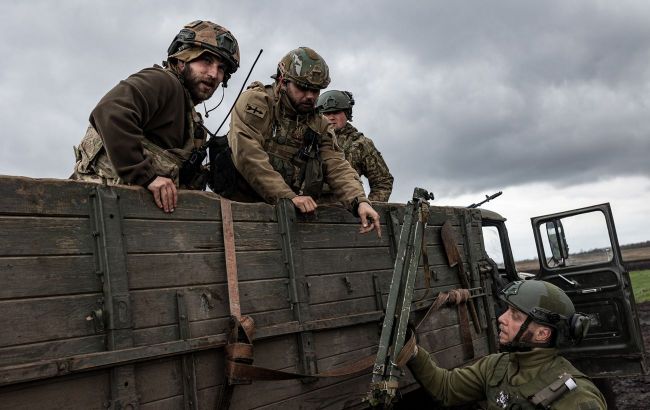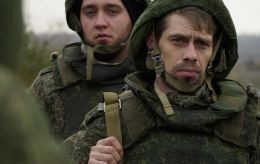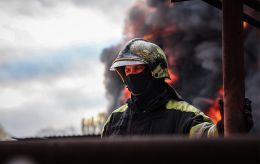Ukraine loses strategic foothold: Why Armed Forces withdrew from Vuhledar and what comes next
 Photo: Defense forces withdraw from Vuhledar (Getty Images)
Photo: Defense forces withdraw from Vuhledar (Getty Images)
The Ukrainian Armed Forces were forced to withdraw from Vuhledar in the Donetsk region due to enemy pressure, as Russian forces occupied the city at the cost of heavy losses. Ukrainian troops will now have to retreat to fortified positions and hold the defense further, while Russian forces are likely to continue their advance towards Kurakhove.
For more details on the battles for Vuhledar, what the loss of the city means, and what might happen next, read the material by RBC-Ukraine below.
Contents:
- Battles for Vuhledar and the withdrawal of Ukrainian forces from the city
- What to expect next
- Will the capture of the city change the course of Russian operations in Donetsk
Battles for Vuhledar and the withdrawal of Ukrainian forces from the city
The Khortytsia operational-strategic group officially confirmed today that Ukrainian troops have withdrawn from Vuhledar. They noted that the enemy suffered heavy losses but directed reserves to conduct flanking strikes in their effort to take control of the city at any cost, which "weakened the defense of the Ukrainian Armed Forces units" and created a risk of encirclement.
"High command authorized the maneuver to withdraw units from Vuhledar in order to preserve personnel and military equipment, and to take positions for further operations," the Khortytsia operational-strategic group stated.
Prior to this, on September 30, the DeepState project reported on its Telegram channel that the Russian forces entered Vuhledar from the west and south, and late on October 1, analysts reported the occupation of the city. Notably, the Ukrainian General Staff did not mention Vuhledar in this morning's report, which described the situation on various frontlines.

"Of course, Ukraine has lost a foothold from which it was advantageous to defend. Our contingent heroically held this position for over two years, maintaining control of the foothold," said Oleksandr Musiienko, head of the Center for Military-Legal Studies, in a comment to RBC-Ukraine. He noted that Ukrainian forces destroyed a significant number of Russian personnel and equipment in the area.
It’s worth noting that the battle for Vuhledar has continued with varying intensity since late March 2022. The defense of the city was maintained by soldiers from the 72nd Mechanized Brigade of the Ukrainian Armed Forces, particularly under heavy assaults from Russian forces in the past six months.
The commander of the drone systems battalion of the 72nd Brigade, Andrii Nazarenko, told Suspilne that Ukrainian fighters had destroyed nine Russian brigades. Currently, at least five Russian army brigades are stationed in Vuhledar, with fresh and well-trained units thrown into the assault.
"The enemy actively attacked from the flanks, doing everything possible to proceed with a frontal attack on the city. Before that, they assaulted Vodiane and advanced to advantageous positions, assaulting the mines near the city," Nazarenko said, adding that to achieve their goal, the Russian forces massively used "carpet bombing" with guided bombs and high-explosive bombs.
Currently, only 107 people remain in the city, which previously had a population of up to 15,000, as they have refused to evacuate. They are living in basements. According to Vadym Filashkin, head of the Donetsk Regional Military Administration, children were evacuated from the city a long time ago.

Photo: Ukrainian Armed Forces withdraw from Vuhledar due to the threat of encirclement (deepstatemap screenshot)
What to expect next
As expert Oleksandr Musiienko explains to RBC-Ukraine, Russian forces indeed had the advantage, forcing the Ukrainian Armed Forces to retreat. He noted that the enemy will now control the dominant heights, meaning Ukrainian soldiers will have to retreat to fortified positions.
"We need to identify these fortified positions and heights that we can use to gain a foothold on these heights and hold the line. Everything will depend on the nature of the enemy's actions. They will likely continue their advance northwest toward Kurakhove from this direction," Musiienko speculates.
He does not rule out the possibility that Ukrainian forces will gradually retreat to Kurakhove, to cities and settlements where they can gain a foothold and better hold the line.
"Essentially, they will form a belt of fortified towns where we can hold the line for quite a long time, as past experiences have shown. Therefore, Russia will focus on advancing in open areas through small settlements," Musiienko says.
In his view, the Russian troops will do everything they can to approach Kurakhove and Pokrovsk, aiming to encircle them without immediately engaging in battles for these settlements, instead waiting for regrouping, reinforcements, and the strengthening of their forces.

Photo: Russian forces are moving to Kurakhove and Pokrovsk to encircle the towns (deepstatemap screenshot)
Will the capture of the city change the course of Russian operations in Donetsk
According to Musiienko, a second possible scenario is that the enemy may form forces in the Pryiutne and Velyka Novosilka areas along the Vremivka direction to launch an offensive there.
"This means that they could simultaneously advance in the southern part of the Donetsk region from two directions: from Vuhledar and from the Vremivka direction. Their aim would be to put pressure from the southern flank on Kurakhove and Pokrovsk," the expert explains.
Additionally, Musiienko notes that the Russian forces may also try to exert pressure in the Kupiansk area, thereby stretching the Ukrainian defense line in the east and forcing the Ukrainian Armed Forces to redeploy their forces from the Kursk region.

Photo: Russian forces can put pressure on Kurakhove and Pokrovsk from the southern flank (deepstatemap screenshot)
"They want to stretch our defense line and push as deep into the Donetsk region as possible. From there, they will advance using a significant amount of infantry, trying to encircle Kurakhove and Pokrovsk by winter, but it's unlikely that they will engage in direct combat in urban areas. We will gradually withdraw towards Kurakhove in the Vuhledar direction," Musiienko summarizes.
Meanwhile, analysts from the Institute for the Study of War (ISW) have expressed the opinion that the Russian capture of Vuhledar is unlikely to fundamentally change the course of their offensive operations in western Donetsk. Their conclusions are mainly based on the fact that Vuhledar is not a particularly important logistical hub.
Musiienko notes that the Russians' plans remain unchanged since Russia has achieved some success and is advancing. Now, the Russian forces are stalling, while the Ukrainian Armed Forces are doing everything possible to slow down the tempo of this operation and exhaust the enemy.
"And the Russians are trying to change the course of events at the tactical level. What has happened is a tactical success for Russia, which could develop into something more if they manage to gain momentum in their operations and make a swift advance after Vuhledar. However, that is unlikely to happen," Musiienko adds.
Read more about what is happening at the front, the enemy's goals, and how events will develop in the coming weeks in the material by RBC-Ukraine.
Sources: The Telegram channel of the Khortytsia operational-strategic group, ISW report, DeepState, Suspilne, and an exclusive commentary by Oleksandr Musiienko, head of the Center for Military-Legal Studies.

